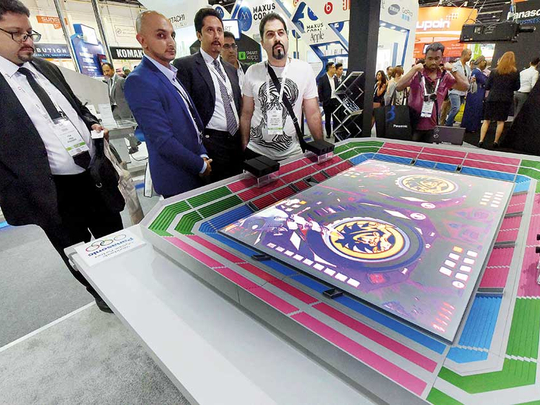
DUBAI: Panasonic is showcasing its strength in its latest projectors and lenses for mapping solutions with an eye on Expo 2020.
Hiroki Soejima, managing director for Panasonic Marketing Middle East and Africa (PMMAF), said that the new technology creates realistic image projections that can be adopted in different businesses and retail settings. These solutions bring in a high level of excitement to sports, musical or any mega events at large stadiums.
“We have really invested in the solutions business for every vertical. With the mapping solutions, we are targeting mainly stadiums and we showcased it in Rio Olympics, as it will cut down costs drastically,” he said.
Take a look inside Panasonic’s 360-degree immersive dome, a new entertainment solution on display at #GITEX2017 pic.twitter.com/pB6nlKBNrb
— Gulf News Business (@GulfNewsBiz) October 8, 2017
With these projection mapping solutions, he said that one can deliver absolute immersion in temporary/permanent installations in single/multi-projection layouts. The latest high-resolution fisheye lens can deliver ‘Dome Mapping’ solution for dome theatres, planetariums, theme parks and events, allowing up to 183 degrees of angle view.
Yasuo Yamasaki, director of system solutions and communications division at PMMAF, said that the Middle East region is known for its spectacular events and the company can improve the visual experience at mega events.
The Japanese company has chalked out its growth strategy for the next three years in a bid to cut its reliance on consumer electronics and focus more on the business-to-business (B2B) segment.
Panasonic expects its Middle East and Africa (MEA) business to more than double this fiscal year as it continues its transformation from an electronics company into a more diversified group.
Soejima said that business-to-customer (B2C) is still a strong market in the Middle East and “we are expanding our product portfolio. Now, Panasonic will come with its full product line-up, but that does not mean that we will not focus on business-to-business (B2B),” he said.
He added that the B2C segment is bigger, and that B2B contributes only less than 30 per cent to the growth.
In the region, he said, growth will come from B2C while globally, it will be from the automotive segment.
“Over the years Middle East region has witnessed a sustained growth across industries. Being a customer-centric brand, we are constantly adapting and evolving to market demands and this year we aim to increase our footprints across the region,” he said.



